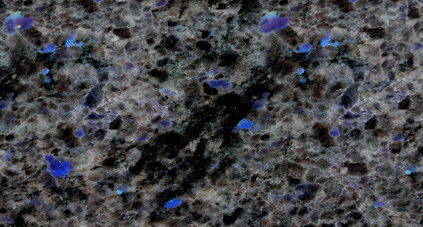"Blue Eyes"

Bulk Density: 2.74- 2.76 kg/dm(cubed)
Bending Strength: 16.7- 17.7 N/mm(squared)
Compression breaking load: 192.3- 195.2 N/mm(squared)
Water Absorption: 0.10- 0.12 weight %
This stone internationally may be nominated as a granite however in the area of application of the european standard (EN) this stone must be nominated as anorthosite
Characteristics
Blue Eyes comes in various colour grades ranging from a light blue (powder blue) to dark and rich blue and in various surfaces and finishes. In all presentations of this rare stone, the quality and clarity of the enclosed crystals set it far apart from the other stones.
Synonyms
Blu Eyes, Blue Eye, Labrador Blue Eyes, Reflect Blue, Ten Mile Bay
Origin
Canada (Nain, Paul Island, Newfoundland and Labrador)
Limited Availability
This stone comes from the sub-arctic region of northern Labrador. It is quarried , to order, only four months of the year, weather permitting
Blue Eyes is quarried by the Inuit, the aboriginal people that populate the arctic and sub-arctic; through their native corporation the Labrador Inuit Development Corporation
The quarry is located in northern Labrador on an island in what's referred to Ten Mile Bay. When visiting the quarry you are likely to spot a pod of whales, as you are to see a polar bear.
The Inuit have been stewards of the prestine sub-arctic since before there was time. Continuing that stewardship today, they warrent the following about Blue Eyes and how its Quarried:
It is quarried in a manner that keeps the quarry environmentally consistent and compatible with the area.
The quarry has been developed to make the site ecologically renewable
The Labrador Inuit Development Corporation prides itself on ensuing that its employment practices are consistent with the highest human rights standards in the quarrying of "Blue Eyes"
Blue Eyes is the only stone, commercially available which can claim of environmental compatibility, ecologically renewable and that children have not been used in its' production
